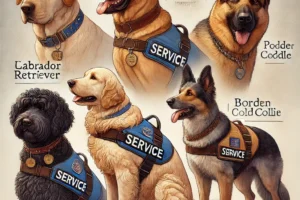Everything You Need to Know About Great Danes: Majestic Giants of the Dog World
Great Danes, also known as the “Apollo of Dogs,” are truly remarkable creatures that capture the hearts of dog lovers worldwide. Their majestic appearance and gentle nature make them a favorite choice for families and individuals alike. In this article, we will delve into the world of Great Danes, uncovering their extraordinary traits, their suitability as family pets, and important considerations for their care. Whether you’re a seasoned dog owner or considering adding a Great Dane to your household, this guide will provide you with valuable insights into this magnificent breed.
The Origins and History of Great Danes:
Great Danes have a rich history that dates back thousands of years. They can trace their ancestry to ancient breeds like the Molossus, a war dog used by the Romans. Over time, Great Danes evolved into the impressive and elegant breed we know today. From their origins in Germany to their recognition by various kennel clubs, the history of Great Danes is as fascinating as the breed itself.
Physical Characteristics and Temperament:
One cannot help but be captivated by the sheer size and grace of Great Danes. These gentle giants can reach heights of up to 32 inches and weigh over 100 pounds. Their regal appearance, with a muscular build and a sleek, short coat, commands attention wherever they go. However, their physical attributes are just the tip of the iceberg. Great Danes are known for their friendly and affectionate nature, making them excellent companions and family pets. Despite their imposing stature, they are generally gentle, patient, and great with children, earning them the nickname “gentle giants.”
Living with a Great Dane: Considerations and Care:
Owning a Great Dane comes with certain considerations due to their size and specific needs. Adequate space is essential, as Great Danes thrive in larger homes or properties with a secure yard. Regular exercise is crucial to maintain their physical and mental well-being. While they are generally low-energy dogs, they still require daily walks and playtime to prevent boredom and weight gain. Additionally, their diet should be carefully managed to ensure proper nutrition and avoid common health issues associated with large breeds.
Health and Common Concerns:
Like any breed, Great Danes are prone to certain health conditions that prospective owners should be aware of. While they are generally a healthy breed, they may experience issues such as hip dysplasia, bloat, heart disease, and certain genetic disorders. Regular veterinary check-ups, a balanced diet, and appropriate exercise are essential to keeping Great Danes in optimal health. Responsible breeding practices, including health screening, can help minimize the risk of hereditary conditions.
Training and Socialization of Great Danes: Unlocking the Full Potential of Your Gentle Giant
Training and socialization are crucial aspects of raising a well-rounded and obedient Great Dane. Due to their large size and potential for strength, it is essential to establish a strong foundation of training and ensure proper socialization from a young age. In this section, we will explore effective training techniques and highlight the importance of socializing your Great Dane to help them become confident, well-behaved companions.
Start Early: The Importance of Puppy Training:
Begin training your Great Dane as early as possible, ideally during their puppyhood. Puppies are highly receptive to learning and can quickly grasp basic commands and behaviors. Introduce simple commands like “sit,” “stay,” and “come” using positive reinforcement methods such as treats, praise, and play. Consistency and patience are key when training your Great Dane, as they are intelligent but can be stubborn at times.
Positive Reinforcement: The Key to Success:
Great Danes respond exceptionally well to positive reinforcement training methods. Reward-based training, where desired behaviors are rewarded with treats, praise, or play, encourages your dog to repeat those behaviors. Use verbal cues and hand signals consistently to help your Great Dane understand your expectations. Avoid punishment-based techniques, as they can damage the trust and bond between you and your dog.
Leash Training and Basic Commands:
Due to their size and strength, leash training is crucial for Great Danes. Begin by introducing your puppy to a leash in a positive and relaxed environment. Teach them to walk calmly on a loose leash by using treats and praise to reward good behavior. Gradually introduce basic commands like “heel” and “leave it” during walks. Training sessions should be short and frequent, focusing on positive reinforcement and keeping your Great Dane engaged.
Socialization: Building Confidence and Friendliness:
Proper socialization is vital for Great Danes to develop into well-adjusted and friendly dogs. Expose them to various environments, sounds, sights, and people from an early age. Encourage positive interactions with other dogs and animals, as well as different individuals of all ages, including children. Dog parks, puppy classes, and controlled playdates can be great opportunities for socialization. Ensure all interactions are positive and supervised to prevent any negative experiences that may impact their confidence.
Ongoing Training and Advanced Commands:
Training should be a lifelong journey for both you and your Great Dane. As they mature, continue to reinforce basic commands and introduce more advanced ones like “stay,” “down,” and “wait.” Engage your Great Dane in mentally stimulating activities like puzzle toys or obedience competitions to keep their minds sharp and provide additional training opportunities. Consistency, patience, and positive reinforcement remain crucial as you progress to more complex commands.
Training and socialization are essential for raising a well-behaved and happy Great Dane. Start training early, use positive reinforcement techniques, and provide ample opportunities for socialization to help your gentle giant grow into a confident and friendly companion. Remember to be patient, consistent, and always prioritize positive interactions. By investing time and effort in their training and socialization, you’ll enjoy a strong bond with your Great Dane and a lifetime of joyful experiences together.







2 Comments
Comments are closed.